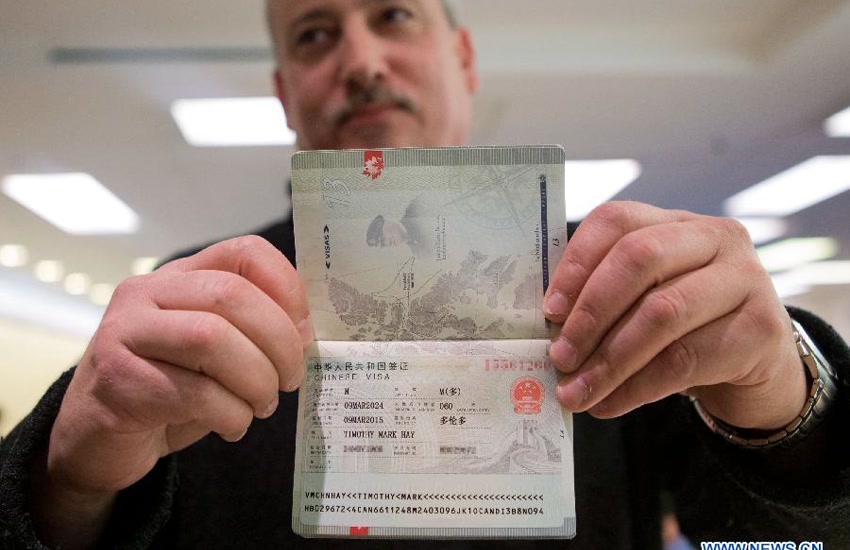
Ni hao, globetrotters! As a seasoned travel blogger who’s spent years exploring the wonders of China Beijing Shanghai, I know that planning a china trip itinerary to this incredible country can feel a little daunting, especially when it comes to visas.
Whether you’re planning to see the Great Wall, explore the bustling streets of Shanghai, or marvel at the Terracotta Army in Xi’an, understanding the visa requirements is crucial.
And before you even *think* about how to pack for a trip to beijing, you need your visa sorted! That’s why I’ve put together this comprehensive guide, packed with up-to-date information and practical advice to make your journey as smooth as silk.
Do US Citizens Need a Visa for China?
Yes, the general rule is that US citizens do need a visa for China for tourism, business, or other travel purposes. There are a few exceptions, which we’ll get into later, but for the vast majority of travelers, a visa is a must.

China Visa Types: Choosing the Right One for You
L Visa (Tourist Visa)
This is the visa you’ll need if you’re traveling to China purely for tourism. Planning to explore the tourist places in beijing china? This is your visa! The good news is that as of January 1, 2024, the Chinese Embassy and Consulates-General in the United States have simplified the application process for the L-visa! You’re no longer required to submit round-trip air ticket booking records, proof of hotel reservations, itineraries, or invitation letters. This makes it much easier to plan your trip independently. If you’re looking for a china travel itinerary 2 weeks, you’ll definitely need this!
M Visa (Business Visa)
If your trip involves commercial or trade activities, this is the visa you need. Perhaps you’re planning to visit the canton fair tour? You’ll typically need documents related to your commercial activity, usually provided by your trade partner in China.
F Visa (Exchange, Visit, Study Tour)
This visa is for exchanges, visits, school trips to china, and other non-commercial activities. You’ll need an invitation letter from a relevant entity or individual in China.
Which countries can travel to China without a visa?
The list of countries with visa-free access to China is constantly evolving. Some countries may have visa-free access for specific regions like Hainan or for transit purposes. Always check the latest regulations on the embassy website before you travel. You may even want to check regulations for apply for port visa shanghai.
Applying for a China Visa in the US: A Step-by-Step Guide
Okay, so you’ve determined you need a visa. Here’s the process, broken down. If you’re wondering how long does it take to get to china, factor in the visa processing time!
Note: The Chinese Embassy in Washington D.C. has consular jurisdiction over Washington D.C., Maryland, Virginia, West Virginia, North Carolina, South Carolina, Kentucky, Tennessee, Delaware, Alabama, Arkansas, Florida, Georgia, Louisiana, Mississippi, Oklahoma, Texas, and Puerto Rico. Be sure you are applying at the correct location based on where you legally reside!
Online Application Process
- Fill Out the Online Application Form (COVA)
- Gather Your Documents
- Submit Your Application
- Pay the Visa Fee
- Pick Up Your Visa
Important Tips for US Citizens Applying for a Chinese Visa
- Apply Early: Don’t wait until the last minute! Give yourself plenty of time, especially if you’re traveling during peak season. If you’re planning a holiday to beijing china, start the visa process well in advance.
- Be Honest and Accurate: Any false information can lead to rejection.
- Follow Instructions Carefully: The Chinese Embassy is very particular about the application process. Adhere to all guidelines.
What About European Citizens?
The visa requirements for European citizens are similar to those for US citizens, but it’s essential to check the specific requirements of the Chinese embassy or consulate in your country. The general types of visas and the required supporting documents will remain the same. The Chinese government offers similar types of visas for citizens of European countries, like the L visa for tourism and M visa for business purposes. Planning a viaje a china from Europe? Check those embassy websites!
Common Concerns and FAQs
Let’s address some frequently asked questions:

Staying Safe and Informed in China
Once you’re in China, it’s important to stay informed and take necessary precautions. It’s especially important to know what to do in beijing china to stay safe.
While violent crime is rare, be aware of potential scams and petty theft. Ensure you have adequate health insurance and necessary vaccinations. Air pollution can be a concern in some cities. China is largely a cashless society. Familiarize yourself with mobile payment options like Alipay or WeChat Pay. Consider how to link credit card to alipay.
For more information about digital payments in China, check out our guide on How to use WeChat and Alipay.
Final Thoughts
Obtaining a visa to travel to China might seem like a hurdle, but with careful planning and attention to detail, you can navigate the process successfully. If you’re trying to plan a china itinerary 10 days, starting with the visa is crucial. China is a country of immense beauty, rich culture, and unforgettable experiences. Don’t let the visa application process deter you from exploring this incredible destination. Remember to consult official sources for the most current information and enjoy your trip! And be sure to check out some of my other posts for tips on what things to do in china – beijing, including experiencing beijing china culture!
Xie xie and safe travels! Don’t forget to explore beyond the usual. Maybe even visit a sunflower china field!



















